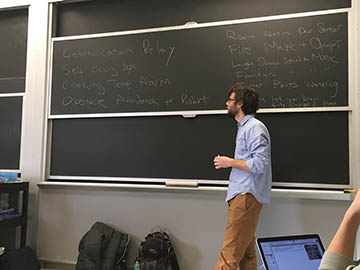
Arduino Instructor, Andrew Ringler, provided instructions about the student project and the presentation. (Image by H. Sharon Lin, MIT OpenCourseWare.)
In this workshop, students deliver two design projects with Arduino.
Students spend six hours of the project time and collaborate to design their first interactive project with Aruidno in groups of two to four.
Students spend twenty hours of the project time and develop their second Arduino project in groups of four to six.










